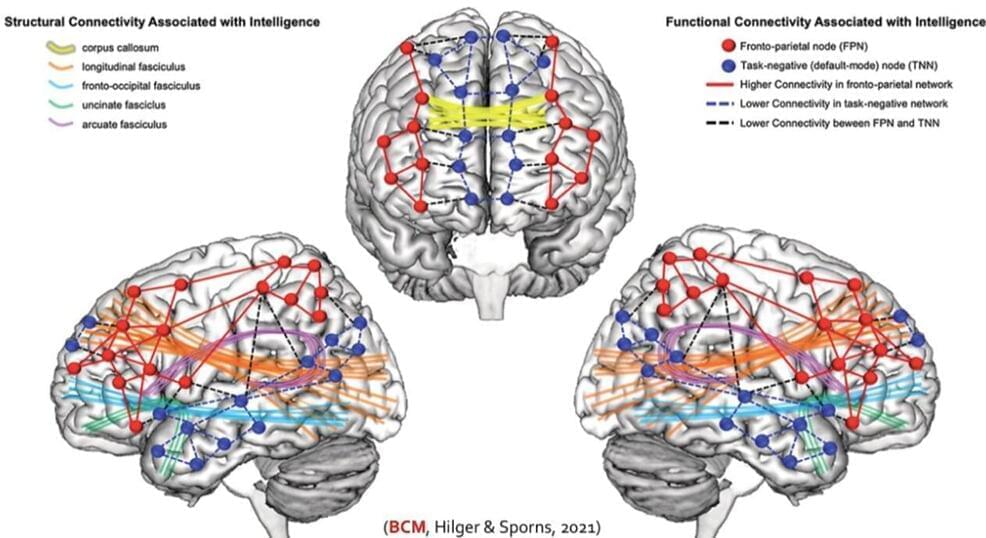The hallmark of a good AI model is its ability to work the same in different groups, settings, and situations. See how these NCI researchers used in-house and external images to test their prostate model’s generalizability.


Learn more about artificial intelligence on Brilliant! First 30 days are free and 20% off the annual premium subscription when you use our link ➜ https://brilliant.org/sabine.
Scientific literature is growing rapidly, meaning scientists are increasingly unable to keep up with all of the latest developments in research. AI large language models, though, can read and “digest” information much more quickly than their human counterparts, making them the perfect tools to conduct massive literature reviews. Recent research shows they’re also very accurate at predicting the results of studies that they’ve never read before. Let’s take a look.
Paper: https://www.nature.com/articles/s4156…
🤓 Check out my new quiz app ➜ http://quizwithit.com/
💌 Support me on Donorbox ➜ https://donorbox.org/swtg.
📝 Transcripts and written news on Substack ➜ https://sciencewtg.substack.com/
👉 Transcript with links to references on Patreon ➜ / sabine.
📩 Free weekly science newsletter ➜ https://sabinehossenfelder.com/newsle…
👂 Audio only podcast ➜ https://open.spotify.com/show/0MkNfXl…
🔗 Join this channel to get access to perks ➜
/ @sabinehossenfelder.
🖼️ On instagram ➜ / sciencewtg.
#science #sciencenews #ai

However, while Google’s achievements have been noted for advancing the field, experts say that quantum computing still has no real-world uses — yet.
“We need a ChatGPT moment for quantum,” Francesco Ricciuti, associate at venture capital firm Runa Capital, told CNBC on Tuesday, referencing OpenAI’s chatbot that has been credited with driving the boom in artificial intelligence. “This is probably not that.”
Proponents of quantum computing claim it will be able to solve problems that current computers can’t.

AI can predict human intelligence by looking at the connections of a working human brain. Neuroscientists can predict intelligence from brain structure and function—to a point. Previous studies have suggested that intelligence is widely distributed across the brain.
Kirsten Hilger and colleagues used machine learning models to predict multiple kinds of intelligence from brain connections of 806 healthy adults while resting and while completing tasks. The article is published in PNAS Nexus.
Fluid intelligence includes inductive and deductive reasoning abilities that do not rely on context, while crystallized intelligence reflects the ability to apply knowledge from individual experience and culture. General intelligence captures both types of intelligence.

OpenAI has released Sora Turbo, an AI video generator, to the public. It offers faster, high-definition video creation up to 22 seconds. Available to ChatGPT Plus and Pro subscribers, it includes safeguards against misuse. Currently, it is not available in European and British markets.
OpenAI on Monday released the latest version of its highly anticipated Sora video generator to the public, stepping into an increasingly crowded field of AI tools that has raised concerns about disruption to creative industries.
The company behind ChatGPT said its latest version, dubbed Sora Turbo, offers significant speed improvements over the February preview model and can create high-definition videos lasting up to 22 seconds.
While tech giants Google and Meta have also announced similar video tools, none have yet met the huge expectations set for AI since the launch of ChatGPT two years ago.

Just as the metaverse industry finally began its breakthrough, ChatGPT’s launch in November 2022 proved a technological avalanche. Amid post-pandemic economic pressures, companies pivoted away from metaverse aspirations to AI adoption, seeking immediate returns through automation and virtualization.
Apple’s 2023 entry into the space with Vision Pro VR headset has similarly faced challenges. At $3,499, with limited content and a sparse developer ecosystem, Apple struggles to find its market. Early projections suggest initial production runs of fewer than 400,000 units.
What if we’ve been looking for the metaverse in the wrong places? While Meta, HTC and Sony have so far struggled to establish their vision of a VR-first digital world, gaming platforms like Roblox quietly built what might be the actual metaverse.

Researchers at the University of Reading and University College London have developed a new artificial intelligence model that can predict how atoms arrange themselves in crystal structures. Called CrystaLLM, the technology works similarly to AI chatbots, by learning the “language” of crystals by studying millions of existing crystal structures. It could lead to faster discovery of new materials for everything from solar panels to computer chips.

To leverage the power of AI for data analytics, companies need to have systems in place that bring all relevant data points together on one platform. Siloed systems prevent AI from conducting a comprehensive evaluation. Companies that want to conduct predictive analysis, such as demand forecasting, will need to give AI platforms access to historical data.
Optimizing user interfaces for both customers and employees is also an important step toward empowering efficient operations. Consumer-facing interfaces should provide transparency, flexibility and a high level of user control, enabling potential customers to explore a variety of options and providing the information needed to ensure moves are handled correctly. Employee-facing interfaces should make it easy for drivers and customer service representatives to receive and respond to notifications such as route updates or customer concerns.
For commercial moving, achieving maximum efficiency requires much more than transportation. Solutions should consider every aspect of the move, leveraging technology and informed strategies to empower a seamless transition. When approached strategically, the result is reduced downtime and the peace of mind that all equipment is transported with precision and moved in accordance with predetermined timelines.


Professional athletic sports require elite athletes to function at the very limit of their abilities. After all, their competition consists entirely of other elite athletes trying to do just that. In this environment of fast-paced action and reaction, the difference between a hit or miss, catch or drop, goal or block, win or loss—milliseconds matter.
Researchers from institutions across Europe and the United States have demonstrated that light-based manipulation of visual processing can significantly enhance visual and visuomotor skills in professional soccer players. The six-week intervention focused on the effects of training under reduced light conditions using the Okkulo system, a novel technology designed to slow down visual processing speed.
Visual and visuomotor abilities are critical in sports, requiring rapid decision-making and accurate physical interactions in coordination with moving objects and other players. Previous research has shown athletes outperform non-athletes in these abilities.